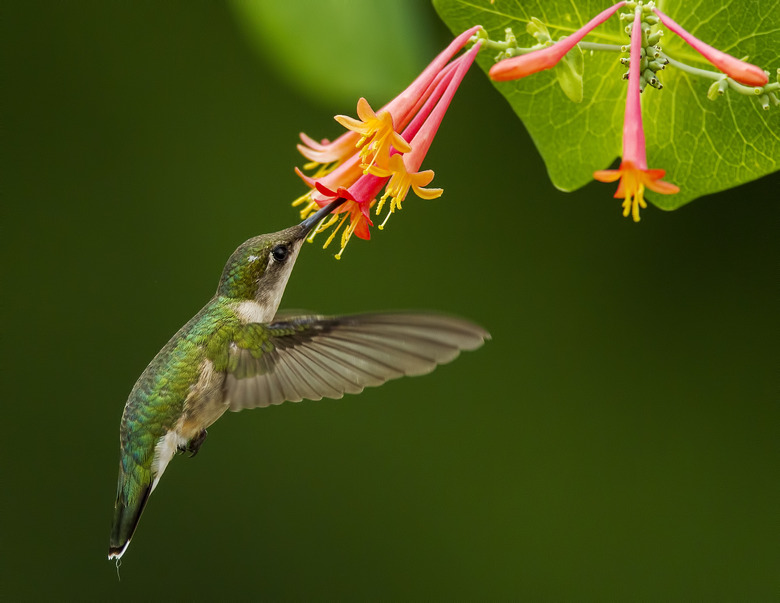What Are The Times For Hummingbirds In Kansas?
Hummingbirds can be seen in Kansas between mid-April and mid- to late-September. Of the 15 North American species, only one – the ruby-throated hummingbird – is common in the state. Casual migrants such as the rufous and broad-tailed hummingbirds are occasionally seen.
Arrival Times
Arrival Times
Hummingbirds are Neotropical migrants, meaning they breed in temperate latitudes, but leave for the winter for tropics in the south. Ruby-throated hummingbirds winter in Central America and most migrate across the Gulf of Mexico to breed in eastern North America. Mature males are the first to head north, arriving in Kansas in early- to mid-April. In June and July, their numbers peak during nesting and brooding. The birds are most active at feeders in late summer, after nesting and just ahead of the fall migration.
Departure Times
Departure Times
Mature males are first to head south, leaving Kansas in mid-July. They're followed by females in August and September. The immature and fledglings are last to migrate, taking extra time to build up fat reserves to make the nonstop, 500-mile flight south. By October, or the first hard frost, the migration is complete.
Species Found in Kansas
Species Found in Kansas
Ruby-throats are by far the most common hummingbird in Kansas. Chuck Otte, Agricultural and Natural Resources Agent for Kansas' Geary County, suggests that ruby-throats account for 99.99 percent of all sightings in the eastern United States. The rufous, broad-tailed and black-chinned hummingbirds are less commonly seen migrants. A number of vagrants – species far out of their typical range – have also been recorded, including Costa's, broad-billed, calliope and Anna's hummingbirds.
Changes in Migration
Changes in Migration
In a study published in 2013, Taylor University's Jason Courter and his co-authors compared historical arrival times with more recent periods and found Ruby-throats are arriving on their breeding grounds earlier, often by more than two weeks. The researchers found these shifts correlate with warming winters and springs. Additionally, the birds are taking longer to make the journey, perhaps a function of an increase in hummingbird feeders along the migration route.
References
- K-State Research and Extension: Hummingbirds
- Kansas Department of Wildlife, Parks and Tourism: Attracting Hummingbirds and Butterflies
- K-State Research and Extension: Landscaping for Hummingbirds
- The Auk: Assessing Migrations of Ruby-Throated Hummingbirds at Broad Spatial and Temporal Scales
- Journey North: Hummingbird
Cite This Article
MLA
Logan, Darcy. "What Are The Times For Hummingbirds In Kansas?" sciencing.com, https://www.sciencing.com/times-hummingbirds-kansas-8516618/. 9 March 2018.
APA
Logan, Darcy. (2018, March 9). What Are The Times For Hummingbirds In Kansas?. sciencing.com. Retrieved from https://www.sciencing.com/times-hummingbirds-kansas-8516618/
Chicago
Logan, Darcy. What Are The Times For Hummingbirds In Kansas? last modified March 24, 2022. https://www.sciencing.com/times-hummingbirds-kansas-8516618/
